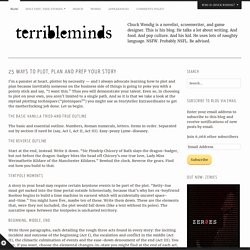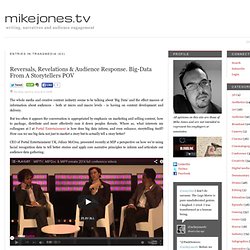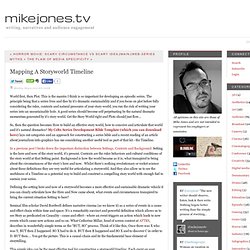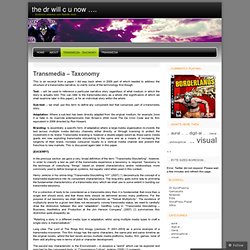

25 Ways To Plot, Plan and Prep Your Story. I’m a panster at heart, plotter by necessity — and I always advocate learning how to plot and plan because inevitably someone on the business side of things is going to poke you with a pointy stick and say, “I want this.”

Thus you will demonstrate your talent. Even so, in choosing to plot on your own, you aren’t limited to a single path. And so it is that we take a look at the myriad plotting techniques (“plotniques?”) You might use as Storyteller Extraordinaire to get the motherfucking job done. Let us begin. The Basic Vanilla Tried-And-True Outline The basic and essential outline.
Journal - mikejones.tv. - Or, how to write an immersive, magic-realist, historical thriller experience for a museum about cold-war era navy warships… (note: the post below does Not represent the opinions of the Australian National Maritime Museum (ANMM), or its staff.

It is intended only to reflect my own perspective in delivering a process for the ANMM as an external consultant.) What place has a writers-room in the development of a museum exhibition? How do you write a spatial, immersive narrative for a museum audience? What is the role of Genre and Dramatic Storytelling to a Museum collection? The past few months have seen me overseeing the development of a multi-platform storyworld bible for the Australian National Maritime Museum who are embarking on an ambitious exhibition project. As a writer my work is more diverse than most, working across traditional books, TV and film as well as interactive, digital and multiplatform projects. Mapping a Storyworld Timeline. World first, then Plot.

This is the mantra I think is so important for developing an episodic series. The principle being that a series lives and dies by it’s dramatic sustainability and if you focus on plot before fully considering the rules, contexts and natural pressures of your story-world, you run the risk of writing your series into an unsustainable hole. A good series should become self perpetuating by the natural dramatic momentum generated by it’s story world. Get the Story World right and Plots should just flow… Useful Transmedia breakdown. Marketers have always used stories to share information, change opinions and influence decisions.
Now, as people create, consume and share brand stories in new ways, marketers need to go beyond the 30-sec product ad or the 300-word press release, and tell purpose-inspired transmedia stories that inspire, organize and energize people. Six Trends in Storytelling Let’s start by recapturing the six important trends that are reshaping how people create, consume and share brand stories: These six trends play an important role in the narrative arc we will draw next: from Hero’s Journey to Heroes to Everyday Heroes. From Hero’s Journey to Heroes to Everyday Heroes Heroʼs Journey: Storytelling The Heroʼs Journey is a good example of a monomyth, or a universal story, that cuts across all types of stories, including myths, movies, novels, and ads. According to Joseph Campbell, all stories follow the same three-part narrative structure of the Hero’s Journey.
25 Things You Should Know About Transmedia Storytelling. Let’s get this out of the way, now — this, like many/most of my other lists, could easily be called “25 Things I Think About Transmedia.”

It does not attempt to purport concrete truths but rather, the things I believe about the subject at hand. I am something of an acolyte and practitioner in the transmedia cult, and sometimes give talks on the subject (as I will be doing next week in Los Angeles). So, here I am, putting my transmedia ducks in a row. Please to enjoy. 1. The current and straightest-forwardest (not a word) definition of transmedia is when you take a single story or storyworld and break it apart like hard toffee so that each of its pieces can live across multiple formats. 2. Transmedia is, admittedly, kind of a buzz-word. 3. The rise of any new or altered media form sees an awkward transitional period where everyone wants to define it. 4. Good storytelling is still good storytelling. 5. Transmedia these days is strongly marketing-centric. 6. 7. 8. 9. 10. 11. 12. Transmedia – Taxonomy. This is an excerpt from a paper I did way back when in 2009 part of which needed to address the structure of a transmedia narrative, to clarify some of the terminology first though: Text: – will be used to reference a particular narrative story regardless of what medium in which the story is actually told.

This can refer to the transmedia story as a whole (the significance of which we shall examine later in this paper), or for an individual story within the whole. Sub-text: – we shall use this term to define any component text that comprises part of a transmedia story. Adaptation: Where a sub-text has been directly adapted from the original medium, for example (love it or hate it, its marmite entertainment) Dan Brown’s 2004 novel The Da Vinci Code and its film equivalent in 2006 directed by Ron Howard.